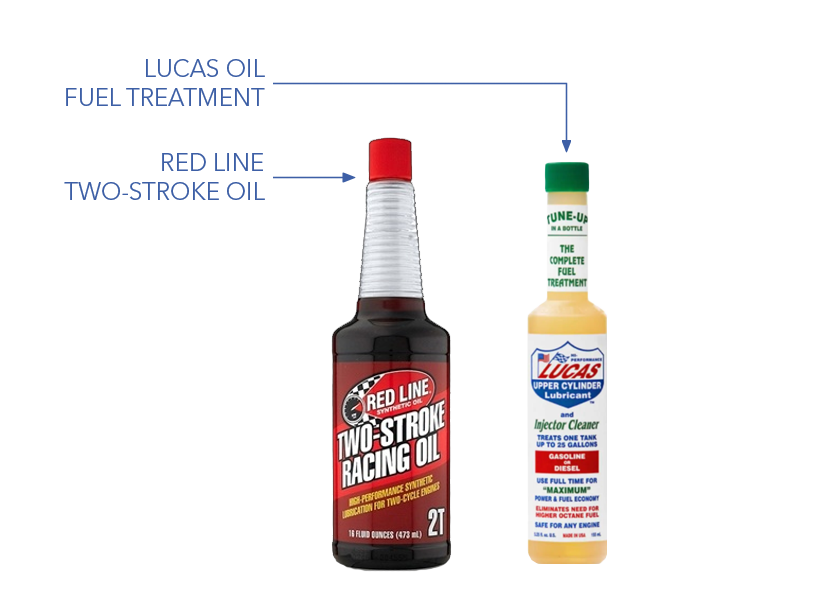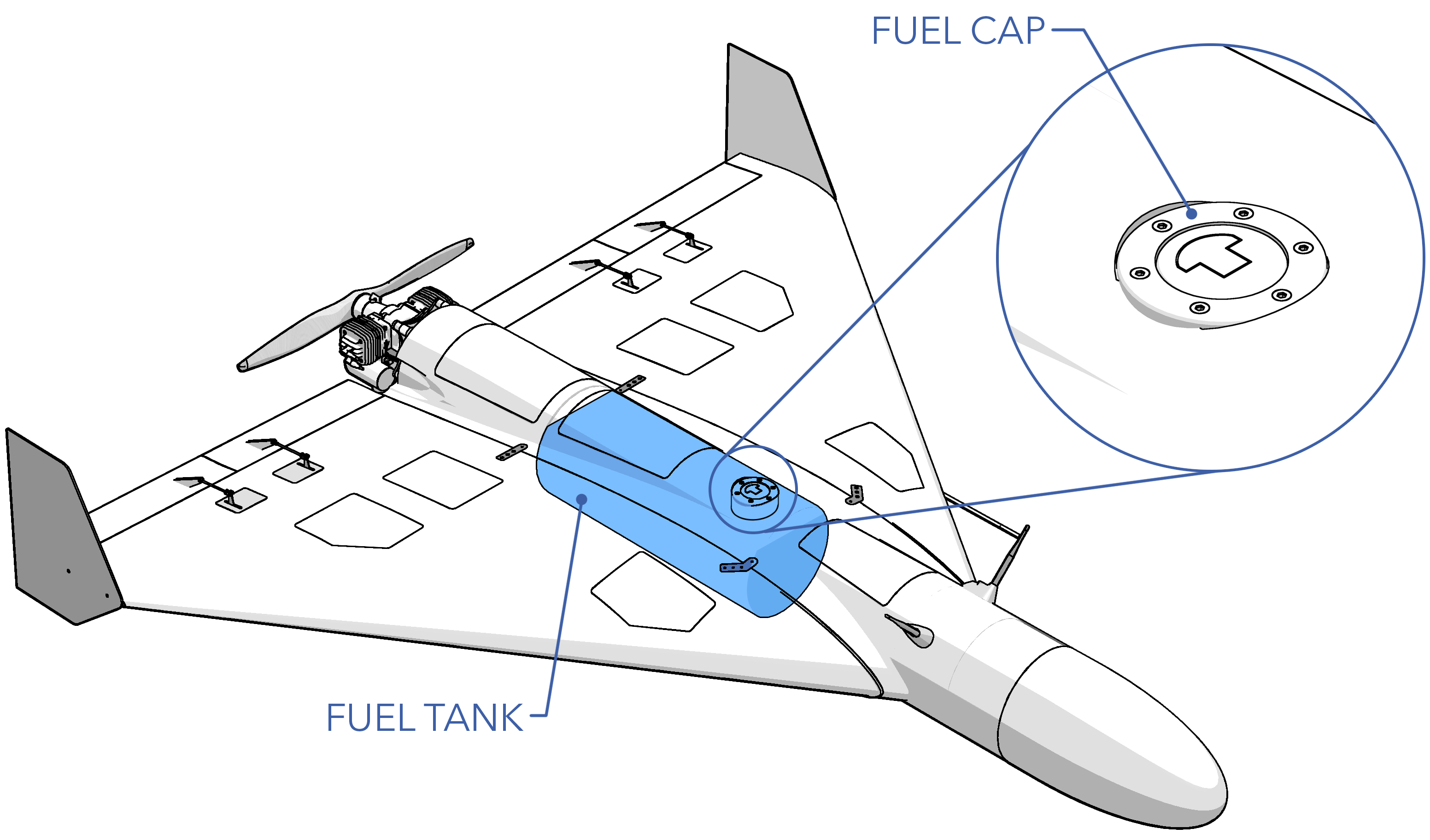Fueling
Gasoline is an extremely flammable liquid and vapor. Causes skin irritation. May cause drowsiness or dizziness. Store in approved containers.
Contents
Fuel and Additives
The engine is compatible with 91 to 95 octane non-leaded pump gasoline. Non-leaded fuel is highly recommended. Using leaded fuels will required shorter time between overhauls (TBO) as a result of lead oxide coking on the cylinder and exhaust ports. Regardless of the specific fuel, it needs to be mixed 40:1 with Red Line Two-Stroke Racing Oil. Five gallons of fuel can be mixed with one 16 ounce (473 ml) bottle of Red Line oil to easily achieve the 40:1 ratio. If Red Line oil is not available, an equivalent two stroke oil (2T) may be used.

Fuel and Additives Specs
| Parameter | Specification |
|---|---|
| Fuel Capacity | 72.6 lbs (12.1 gal) |
| Fuel Consumption | ~12 lbs/hr (2 gal/hr) |
| Fuel Type | 87-91 octane |
| Two Stroke Oil | Red Line Two-Stroke Racing Oil |
| Two Stroke Oil Mix | 40:1 (gas to oil) |
Gasoline weighs about six pounds per gallon, or about 0.72 kilograms per liter.
Fueling

- Mix gasoline with two stroke oil.
- Determine the amount of fuel, by weight, required for the flight duration plus an additional 30 minute reserve of gas (approximately 6 lbs or 1 gallon).
- Place the fueler on a scale, on flat ground, and record the starting weight.
- Remove the aircraft fuel cap.
- Dispense fuel until the scale reads the starting weight minus the desired weight of fuel. If the fuel tank is filled completely, fuel will begin dripping from the overflow vent located at the rear right of the fuselage. If this happens, drain a small amount of fuel from the aircraft until the vent stops dripping.
- Secure the aircraft fuel cap.
- Record the fuel weight.
Defueling
- Place the a fuel can on a scale, on flat ground, and record the starting weight.
- Remove the aircraft fuel cap.
- Insert the fuel line from the fueler into the fuel tank.
- On the fueler, toggle the switch to begin defueling.
- As the tank nears empty, the fueler will begin to draw air bubbles through the pump. Keep draining until the fuel line is mostly air.
Never leave the fueler unattended while fueling or defueling. Continuously drawing air through the fuel pump from an empty tank can lead to overheating and eventual seizure of the pump.
- Turn off the fueler.
- Remove the fuel line.
- Secure the aircraft fuel cap.
- Record the fuel weight removed.
Storage
Mixed fuel for two-stroke engines is typically good for up to 30 days. Store fuel in a clean, airtight container designed for fuel to prevent spillage, evaporation, and permeation. Before filling the tank, clean the cap and surrounding area to keep dirt and debris out. Ethanol-blended gasoline ages faster because ethanol absorbs water, which can contaminate the fuel, making it harder to burn and potentially damaging the fuel system.